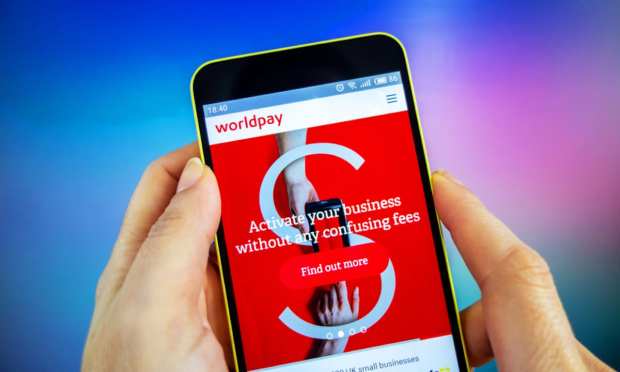B2B Payments Go Decisively Digital As Consumerization Reshapes Expectations

Digital business-to-business (B2B) payments are overtaking paper processes one at a time, which isn’t fast enough in a real-time-obsessed business world. Companies need to get faster … faster.
PYMNTS’ February 2021 Global B2B Payments Playbook, done in collaboration with Worldpay B2B Payments, is an exploration in accelerating the inexplicably slow B2B payments space, and how smart digitization is now moving business payments with speed, and at scale.
“More businesses now expect their marketplaces and providers to work seamlessly with the digital systems and payment types they prefer, rather than cling to outdated methods. Facilitating this B2B personalization is thus key to helping eCommerce marketplaces and other players in the global B2B space stay competitive,” per the new Playbook.
As digital erases trade barriers and payments frictions, the name of game will be “seamless,” whether paying vendors cross-town or cross-planet. The new Playbook offers a wealth of insights for players on both sides of the transaction to bring B2B payments out of the past.
B2B Laggards Be Gone
A lesson the pandemic drove home with great force is that B2B payments in 2021 badly need consumerization, as the same vendor waiting for your check to arrive in the mail just got a near-instant cloud-based payment from a more tech-savvy customer. Guess which type the vendor prefers.
It’s the consumerization of B2B payments — and, ready or not, it’s happening.
“Advancements in B2B payments tend to lag behind advancements in B2C payments and are often subject to constraints imposed by the business logic and functionality in the ERP and financial systems used by enterprises,” Eric Bushman, vice president of solutions engineering for Worldpay B2B Payments, told PYMNTS. Noting that the pandemic forced a reengineering of old routines, Bushman added that “the pandemic has provided a clear focus on improvement of [the] workflows and technologies [that] process B2B payments, driving a move toward more diverse methods and channels of B2B payments — especially real-time payments.”
Bushman added that new B2B payment forms “drive the push for enterprises to engage with payment processing platforms [that] may have traditionally focused more on the B2C market and [have] platforms [that] provide value-added solutions, such as reporting portals with advanced analytics and reconciliation features, improved focus on [the] security of payment method account details, targeted solutions to improve payment acceptance rates, a focus on omnichannel acceptance and enhanced integration with ERP and financial systems.”
Making New Connections
Making money move faster and more safely is crucial as economies struggle to emerge from the pandemic-induced recession and resulting chaos, particularly in B2B payments. That has led to calls for more B2B payments personalization, more akin to the consumer experience.
Noting that electronic B2B payments are not exactly new, Ragui Selwanes, director of business payments for Amazon Business, told PYMNTS, “I think what [the pandemic] did in this particular case is that when everyone shifted to work-from-home access, the sort of systems that were more manual got diminished pretty significantly. By necessity, businesses were compelled to do, if they were not already there, the conversion to [an] electronic payments structure.”
As these conversions advance, the Global B2B Payments Playbook states that “companies looking to digitize their B2B payments must also be sure that these solutions can integrate with the other parts of their payments flows, allowing them to seamlessly send all the necessary data as well. Allowing any disconnection can lead to costly errors and frustrations that can slow down invoices or payments, eliminating the speed and transparency granted by digital solutions. Connecting the eCommerce platform with other systems in the ordering process is critical for businesses taking this next step into the eCommerce world.”
